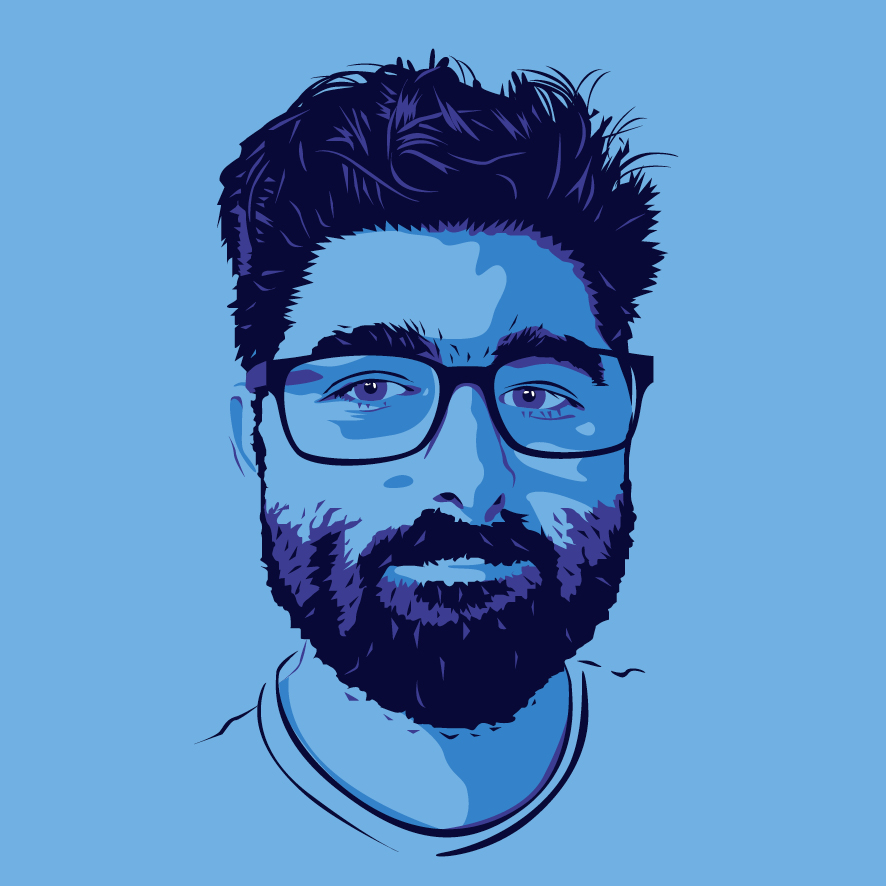The making of Company of Heroes: prototypes, design and the 'Donkeyschreck'
Relic designers reminisce about the classic WW2 RTS.
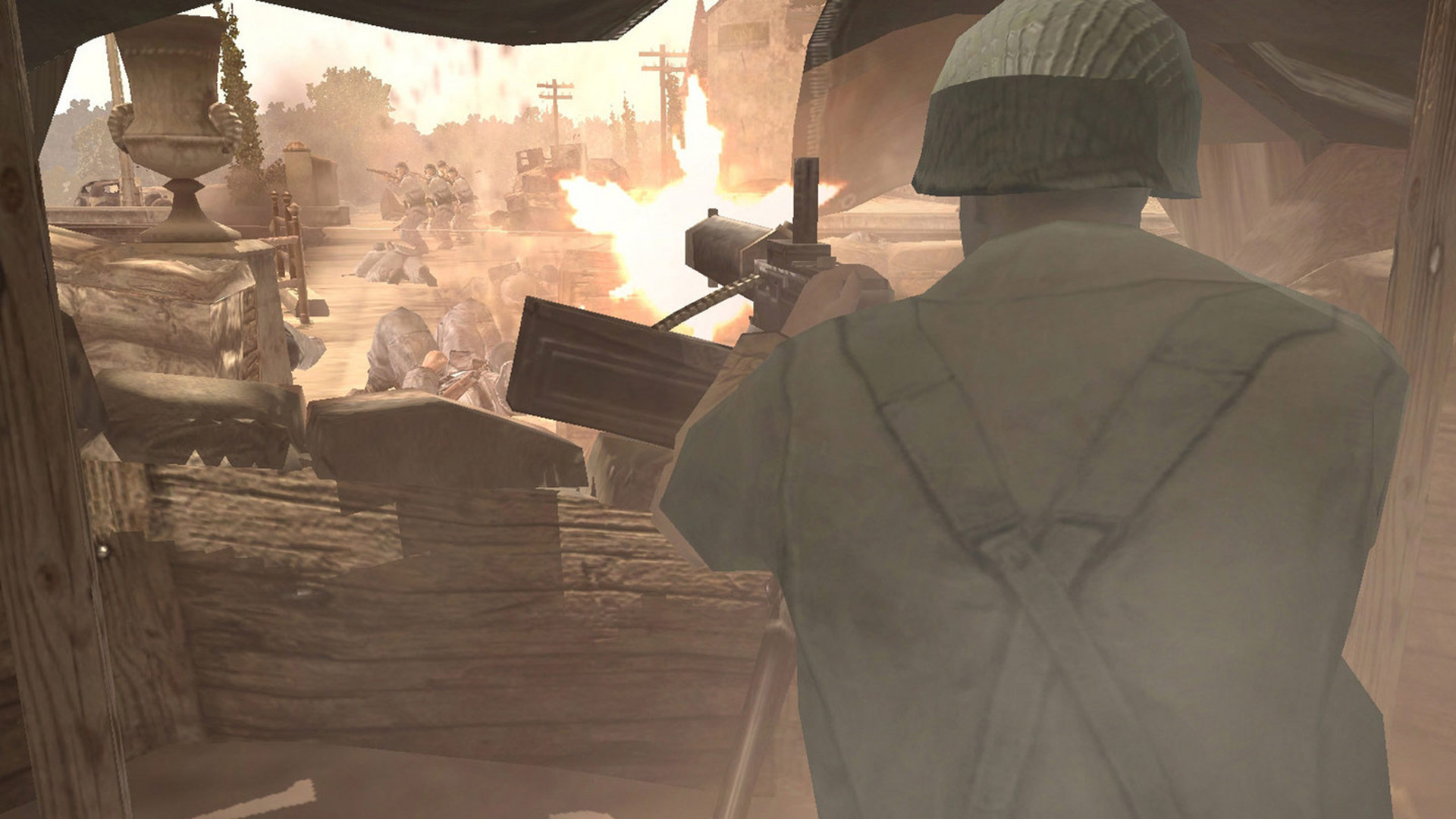
It's hard to believe that it's been ten years since Company of Heroes landed. It impressed us with its explosive simulation of World War 2 squad tactics, inspired by Band of Brothers, Saving Private Ryan and mid-2000s World War 2 shooters. The game still plays wonderfully today, so it's as good a time as any to talk to Relic's Quinn Duffy, Ian Thomson and Alun Bjorksten about how Company of Heroes came to be, from its early prototyping stage in the Impossible Creatures engine, through to the design of the game's finest missions, and the inclusion of the enigmatic 'Donkeyschreck'.
PC Gamer: Let's start at the beginning, the very first moment you guys decided to do a World War 2 game after coming off I believe it was Impossible Creatures, is that right? Was it an idea that had been hanging around the studio for a long time? How did it start?
Quinn Duffy, game director: We finished Impossible Creatures with Microsoft and we did the Insect Invasion expansion pack and so it was a small team kind of ready to go. THQ was publishing Dawn of War at the time so we had a relationship with them and we were casting around for another project. We knew RTS—we had a kind of engine to build games within and some people were ready. World War 2 was popular—it was maybe just at its zenith in popularity. We had Band of Brothers, we had Saving Private Ryan before that and so it had a real presence in the marketplace, and it was big in shooters, and I thought that there was an opportunity to do something really spectacular and take a maybe different approach to RTS and to World War 2, to do some of the high production value stuff.
PCG: So you started prototyping in the Impossible Creatures engine?
Ian Thomson, principal programmer: The genesis is back in the Impossible Creatures technology that we built. We spent many years making that game and learning a lot, thinking “this is how I’d do it better.” Some of those things were being done as part of work happening on Dawn of War which was running in parallel.
But also we were sitting down and doing a bit of dreaming in terms of—we’re looking around at what other games are doing and cherry-picking and stealing, really—and we were like “oh wow, lighting looks good over here, there’s a thing called Normal Maps!” and “Things use physics now! Let’s actually bring some of those things in.” And also additionally in terms of animation technology: “Well lets have something that allows us to make better decisions about what animations we’re using and blending between them.” And all those things tying together really create a a more realistic character motion in what they’re doing instead of just wiggly legs and arms.
And so Quinn—the programmers pretty much said “well, have two programmers, work on this prototype using some of our old engine technology and the rest of us are going to go away and make something new and fancy for you.”—So yeah, we kind of disappeared for about a year, which I think was quite infuriating for Quinn, because he kept wondering when he was going to get actually finally start making this game.
Keep up to date with the most important stories and the best deals, as picked by the PC Gamer team.
Nothing technical would translate over to Essence. Nothing you tuned, none of the combat, none of the feel. And so when you get the new engine, you’re starting from scratch.
QD: Yeah, prototyping in the IC engine was—there was at least nine or ten months of doing that, and then very little of what you’ve done translates. Nothing technical would translate over to Essence. So nothing you tuned, none of the combat, none of the feel, nothing translates. And so when you get the new engine, you’re starting from scratch.
But as you’re rebuilding, it’s a little bit organic. You start to realise that maybe we don’t need that piece any more. The engine gives us the ability to do all of this extra animation so we can take out stupid things like stances. I’ve done a few games here where it’s IP & engine and they always take extra long, and they’re always extra hard because you’re trying to generate the world and how you build it at the same time. That’s proven to be really tough.
PCG: What kind of things were present in the prototype that made it through and what kind of things got cut? Did the vision for the game change during that transition?
QD: If you played the later version of the Impossible Creatures prototypes you’d recognise the intent, if you kind of squinted and had somebody explain it to you. It had cover, but I don’t think we had directional cover in IC. We had area cover, which was more like Dawn of War. We had the line of sight stuff in IC, we had Squads in IC, we had some of the combat intent that we wanted in terms of battle lengths and a little bit of the flavour, but not that level of presentation that we ended up with in Essence.
The big thing, for me gameplay wise, one of the biggest decisions in Essence was directional cover and flanking, and that really changed the way the game worked. It made it far more tactical and we couldn’t do that in the IC engine. A lot of different economic systems and territory systems we tried in Impossible Creatures were more of an influence-based territory that kind of expanded around your base and the buildings you put down. That territory would envelop resource points in the world and let you get resources that way, so you’re sort of building your own supply lines. It was a little bit unclear, and it didn’t look nice.
IT: The AI programmer got to the point where he was like “I’m just going to tag to the maps to say the best place to put the territory points for the AI instead of trying to infer it.” And at that point we had the realisation that maybe we should just have fixed territory regions, which allowed then, I think, players to understand the map better.
QD: That came pretty late. That was like nine months from the end or something.

PCG: On the tactical level, did you always want to do those small skirmish level engagements? Those tactical towns and cities and pin-and-flank stuff, or were you considering something larger at any point?
Alun Bjorksten, principal tech artist: Uh no, I think that was in from the very start. In our very first pre-visualisation we had of gameplay, it was essentially a little rendered movie that the art team put together that showed just one of those exact 'find, fix, flank, finish' type of engagements where a couple of squads and a tank would move down the street, then the tank gets knocked, out and then they engage a building. Some guys pin it down and the other guys move up and throw a molotov inside or something. So this was always something we had in mind. Once we had that down then really all hands on deck to just really execute on that vision.
PCG: It was interesting that there was a tank in there from the very start with this kind of combined arms vision for the game was clearly already part of it.
AB: The combined ops thing was really there from the very start. We didn’t want to have this RTS thing where a squad of soldiers with rifles would just be pinging away at a tank and its health would be slowly going down and down and down and then the tank would blow up for no reason, right? We wanted to have this game be based in reality, and more intuitive to people who just knew something about the history. “No, you’re not going to knock this tank out with those rifles, go and get something else!” “Go get a bazooka or an anti-tank gun or another tank then come back and figure this out, or go to a path that the tank can’t get towards”
PCG: were there any units that you tried that didn’t make it in or any particular units that turned out super well?
QD: There’s probably more about certain unit roles and mixing and matching. The original intent with the Sherman, if I recall, was that there were all of these upgrades you could do; you could do a bulldozer, or you could do a mine flail or you could get a flamethrower. That became a bit of a player nightmare and a logistical nightmare on our side. There were those kinds of things where, in an attempt to be more realistic about stuff, or give players more options it probably confused the pool.
I think there was a US officer we had that we never really found a function for in the game and so I don’t know if he eventually made an appearance in the expansion or some other kind of content—he probably ended up in CoHO [Company of Heroes Online].
AB: I can only think of for some sort of sensitivity to showing like the SS—and some things around there—people kept asking and we kept saying “Not sure we’re gonna do that.”
QD: Yeah, so it would be that for sure, that sort of cultural and political sensitivity to the war, absolutely. We have kind of analogues, I guess, but those things don’t always appeal to the real strong history buffs; they want like the uniform with the badge—but we’re not at that level.
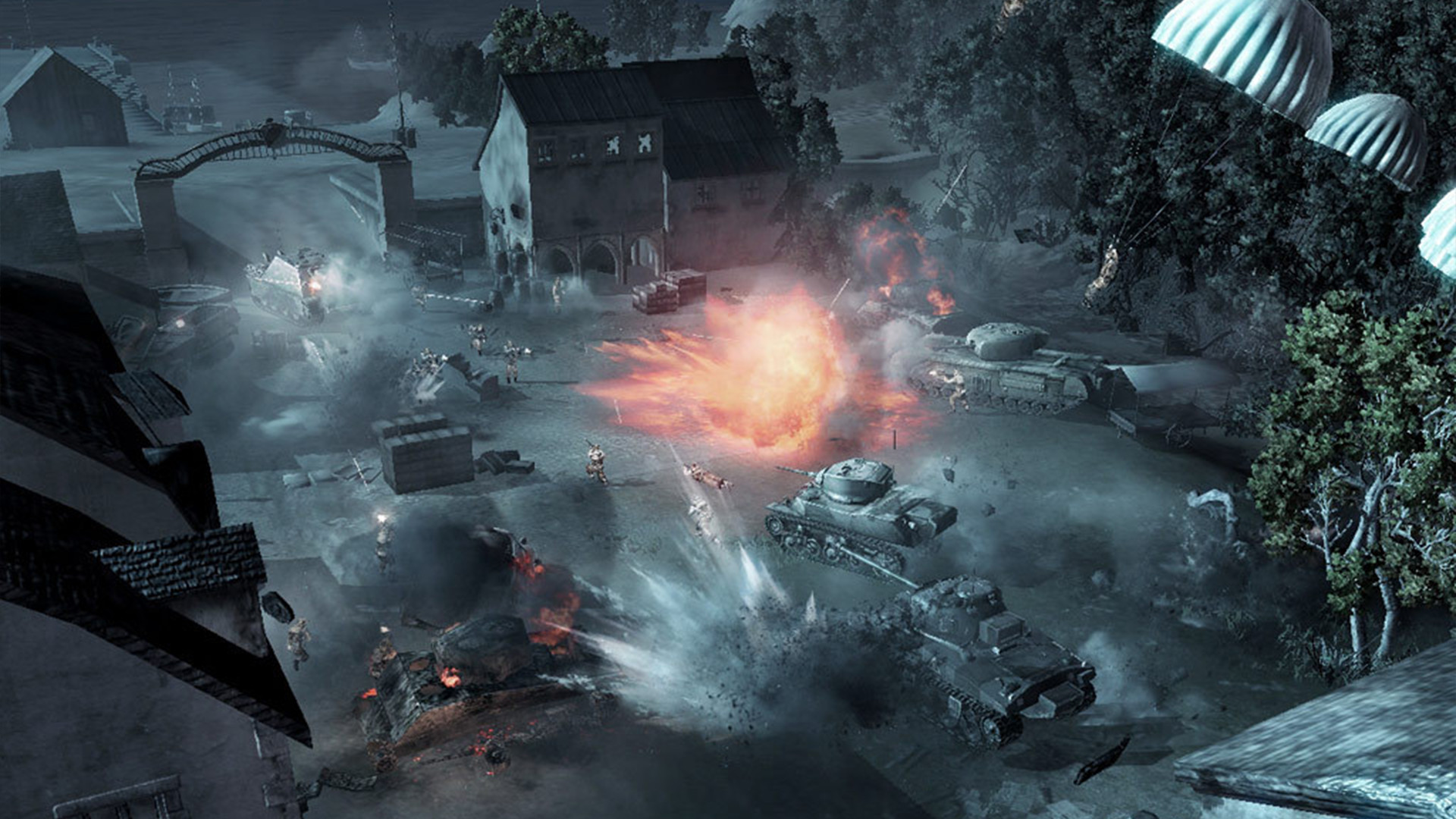
PCG: Were any units particularly difficult to realise? Paratroopers spring to mind—units that can float down into battle through a bunch of buildings.
QD: Yeah, we started off being super punitive in terms of paratrooper failure. They hit anything, they just died. A whole squad of paratroopers would just land on a roof and just all die. So there were things that, for gameplay reasons, we dialled back—a certain level of acceptable casualties in paratrooper regiments wasn’t good game design.
I think probably one of the hardest things to get right were the airplanes strafing. They were hard to tune, they were hard to get to look right. The sound too—it’s hard to go out and record a P47. There was a lot of back and forth on those, they were either super over-powered or just a waste of time, and we struggled with those a lot. And the gliders. Those were kind of fun because you put them in and then you realise that people are just going to use them to land on other people, and then it’s like “well, OK we need a whole bunch of tech and systems to not do that or to avoid the buildings or align the UI on streets or other things so that it would function properly instead of just smashing into a building.” So you end up doing a lot to make those things work.
PCG: Unit resilience always struck me as a vital aspect of Company of Heroes' pacing, the time it takes for units to whittle one another down.
QD: Yeah, we wanted a combat system where range became a factor in your effectiveness, so battle lengths at short range were quite a bit shorter than they were at long range, and that allowed for certain ambushes and surprises and the use of flanking. When we started the targets, for combat between two rifle squads, we allotted 90 second battles at long range and 10-15 second at short range, and we reduced the rate of fire to make it seem more like they were aiming and shooting as opposed to just unleashing on somebody up close, and that allowed us to create unit roles like sub machine guns—really bad at long range, because that’s kind of what you’d expect, and really good at short range. There was that element of realism in combat. When guys start shooting they don't go down and they die at the same timescale regardless of where they are on the map. We wanted to avoid that.
And then from the design side, that was allowing people time to react and to see what was happening. The pinning system isn’t intended to be punitive. Actually when your squads were pinned, you weren’t taking any damage, so it gave you time to make a plan—“I can fall back or I can try and counter my attacker somehow”—and you use smoke or get another unit to flank. It was all about understanding those tactical options and then having the time to act on them. That was part of the design pretty early.
PCG: The retreat move seems like a softening move also in that context. OK, you’ve made a mistake but everything's not lost if you’re paying attention.
QD: Yeah, yeah totally, and that informed the feedback system for the player. Take the speech system. The guys get more panicked and they’re calling from off screen to let you know they’re under fire, but if you’re an inexperienced player or someone who doesn’t panic, then they’re going to be fine for just a bit. But you can’t leave them forever, because at some point, somebody’s going to run up with a grenade or a sub machine gun and do something and wipe that squad out. It was definitely an attempt to allow the player to have time to spread their focus around and not get instantly murdered, although I think that can happen.
AB: We wanted a sense for the player that they can save these guys from death, and there’s a bit of an emotional attachment there to those little soldiers who are doing their bidding. We wanted to try and get the player to start giving a damn about them, and pull them back if they’re in a hopeless situation and then maybe put them somewhere else where there’s maybe more chance of success.
QD: Yeah, all the preservation stuff around that too, I mean you keep a squad around, you preserve their veterancy; reinforcements are cheaper than buying new. There’s all these mechanics in there that are about keeping your guys alive—the retreat, you know? Keep these guys alive and get them back in the fight. That allows a competent player, a player that is managing their armies effectively, to build an advantage over time if they keep their squads alive.
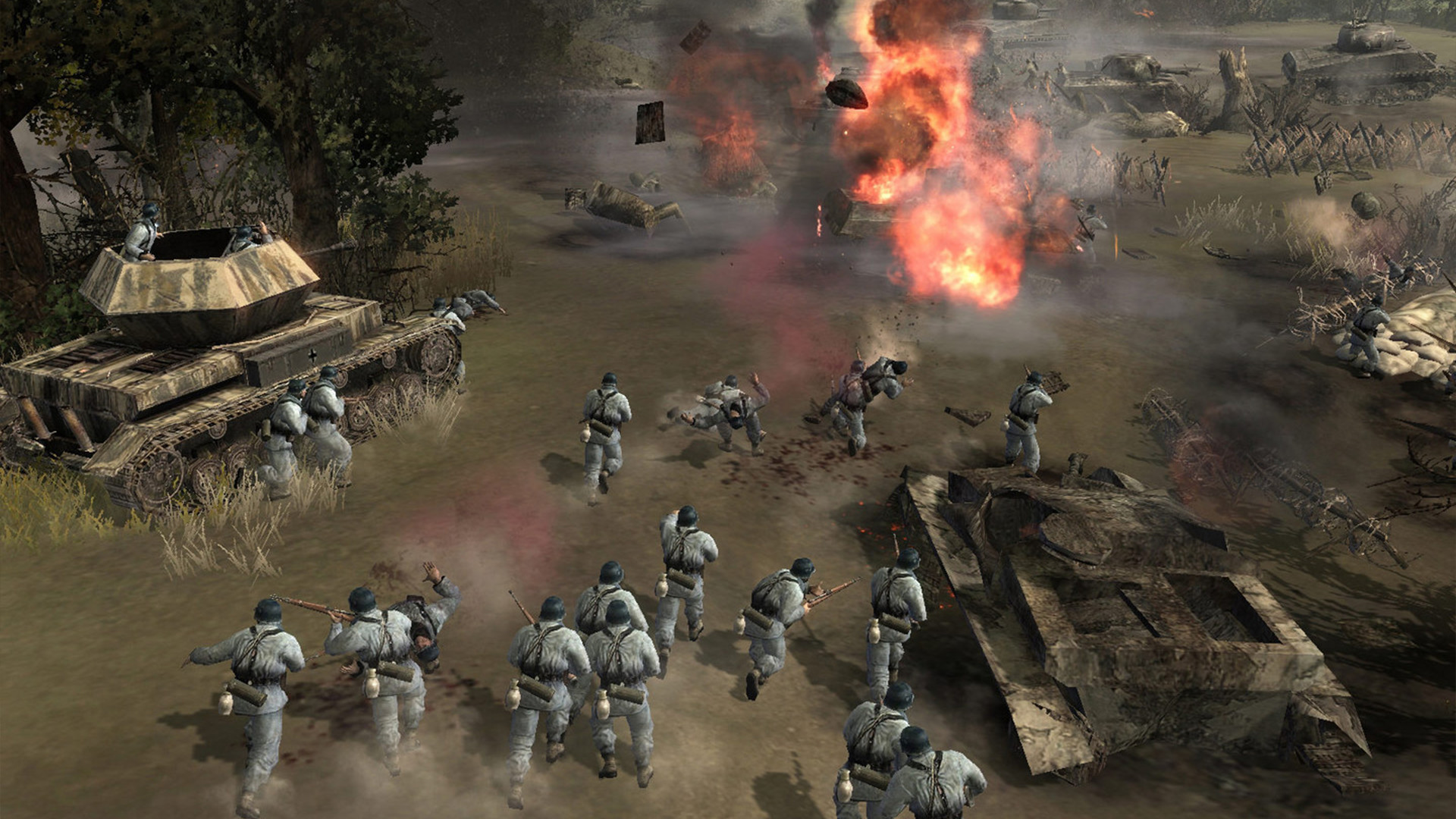
PCG: The speech system is another memorable aspect of Company of Heroes. You probably have the chattiest units in RTS games. Was that something that emerged as a player feedback mechanic or did that come from that vision of trying to create these characters you can invest in?
QD: A little bit of both yeah. There’s 56 thousand lines, or something like that, of speech in the game or something. In the speech banks for the main game and the expansion, something like that. A big part of the vision of bringing this world to life was with the amount of contextual speech—the “I’m being attacked by heavy armour and I don’t have a bazooka”. And I’m going to say a line like “I’m being attacked by heavy armour and I do have a bazooka” or “I’m being attacked by heavy armour and half my squad is dead and I have a bazooka!” or “I’m being attacked by heavy armour, and half my squad is dead AND there’s German infantry inbound.” It builds this picture of the battlefield and the audio and the speech is so important to that.
I mean I think we’ve got—in CoH and CoH2—the best audio in strategy games, just from an experiential perspective, and that’s always been a big part. Our original audio programmers came from DICE—both a couple of twin towers of Swedish audio power! DICE, their audio is absolutely stunning, so they brought a lot of that experience with them as well and built this amazing audio tableaux.
IT: I can remember looking through the localisation database and just doing some searches on cuss-words just to see how many that were in there, and I was like “Oh, there’s that many F-bombs dropped.”
AB: Some of them were named after ourselves on the development team, so we had the opportunity to have these little conversations between two soldiers and the different guys are actually on the development team.
PCG: When it came to designing the campaign, what did you decide to leave out of the Second World War, and why did you focus on the conflicts that you did?
QD: There was actually an intent to go much further. We had Battle of the Bulge concept art, and what I think happened was “Oh crap, that’s gonna take a long time!” And so then it was “Oh okay let’s do Normandy!” because it was self contained and had a beginning and an end. It was a sort of three month battle, and you could end it on a high note with the breakout of Normandy, so that became quite encapsulated. Especially in the West when you think of World War 2 that’s the kind of experience that comes to mind I think.
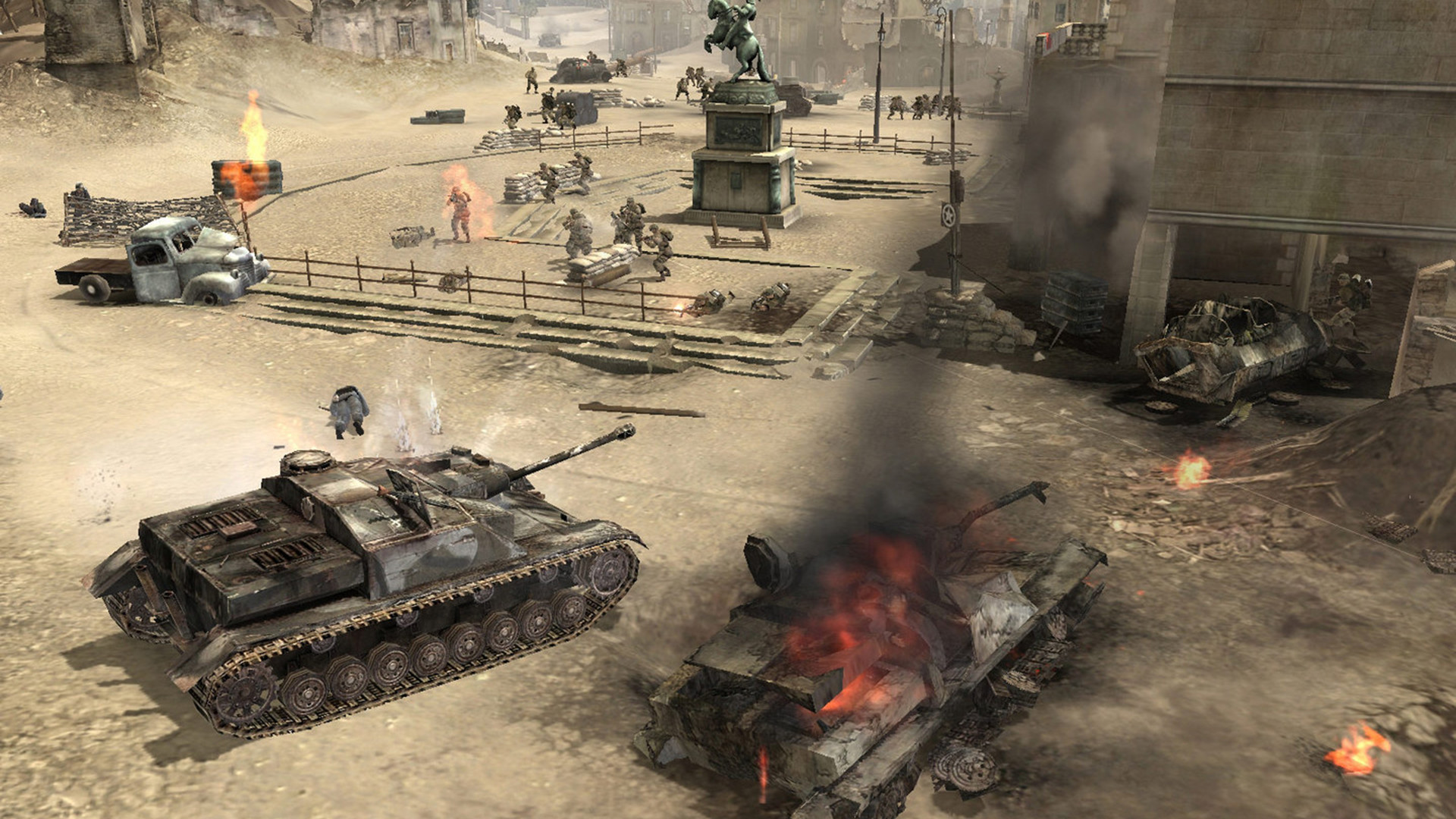
PCG: There are still some ambitious scenarios from that context.
IT: I can remember from a programmer standpoint, you see Carentan and we have to deal with you playing on the same map as the counter defence and we have to maintain all the damage you did from the previous playthrough in a second map. I think it gave a good experience, but we put a lot into making that one work!
PCG: The Carentan missions are my favourites actually. They have a good enclosed story arc. You start off with just a couple of units and then an hour later you’re in this incredibly noisy, huge war-front at the edge of town.
QD: I know those missions had a tremendous amount of effort put in. They were sort of a set piece, they were an example of what we were shooting for. I think just the balance to get the kind of desperate sense of defence in the second part of the mission and get that feeling just right of being rescued at just the right moment. Getting that with so many different kinds of players playing, is really hard. But it was such a cool inspiration from Band of Brothers, and doing our take on Carentan and having that as reference and seeing the little bits emerging from the inspiration was really neat. To my recollection it was one of the missions that probably had the most time put into it.
AB: It was part of the E3 demo that we showed in 2005 I think and it included the attack into Carentan.
IT: That was the inspiration for the Dawn of War 2 concept too as well. I think I recall Johnny and our team speaking highly about the “sitting up in your seat”, with very few squads to control with more 'in it' approach, and I think that was the genesis of that.
PCG: We've also seen some early concept art for an Italy expansion that never came to pass, what's the story there?
QD: That came down to a decision to do another campaign or Company of Heroes Online. So that was that point.
Ian: Yeah so we had two initiatives at the team level. We needed to pick a lane at that point and there was so much momentum building around the buzz of free-to-play in the East and it moving West and trying to be the first AAA title to make the successful conversion, so we parked Italy for the interim and focused on China and eventually Korea, and finally we came back to North America but yeah, that’s the story behind Italy.
But we did get, in the closing months, we did get the Donkeyschreck?
QD: Yeah. Somebody did the Donkeyschreck!
IT: Yeah, someone found on the internet—thanks internet!—a donkey with this wooden structure on its back with two Panzerschrecks attached to it?
QD: I mean it was a pack animal. It was misinterpreted. They thought it was a weapon but it was a donkey pack animal so we put that in as kind of an Easter Egg. We had a donkey that had I think a Panzerschreck and a Panzerfaust and it would poop mines!
IT: And it had a sprint!
Editor's note—here is the mighty Donkeyschreck Easter Egg, named the Eselschreck in the game after the German for "Donkey".
PCG: Finally, how you go about designing the axis and allies in a multiplayer context?
QD: We looked at true history inspiration as much as possible. We were sort of abstracting in tuning the feel and character of these armies. The German army had a very distinct character and a distinct tactical approach and reliance on certain weapons and we wanted to try and capture those.
One of the early things we develop is “army essence”—their character, their qualities, and the things that the history books would point out as important elements to their success. Then we try to build their armies and their tech trees to tie that essence in as much as possible. Then it’s a matter of getting our armies pitted against each other again and again and tweaking and tuning, but only in so far as it doesn’t break the game. I mean we know ultimately the US won, but they didn’t win every battle, right? They won in many ways through logistics and speed and mechanisation. At a tactical level and a solider-versus-soldier, some would argue that the Germans were better. But those are hard things to put into a game; you can’t be getting your ass whipped every time you run into a German squad. And so you just try and deliver the feel more than anything—within the balance.
Part of the UK team, Tom was with PC Gamer at the very beginning of the website's launch—first as a news writer, and then as online editor until his departure in 2020. His specialties are strategy games, action RPGs, hack ‘n slash games, digital card games… basically anything that he can fit on a hard drive. His final boss form is Deckard Cain.
